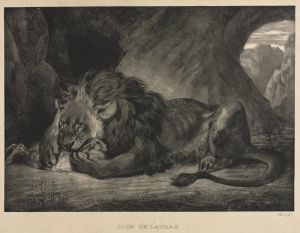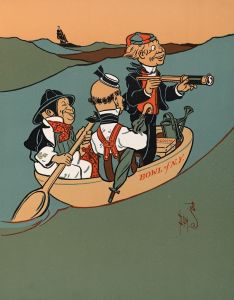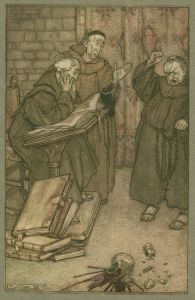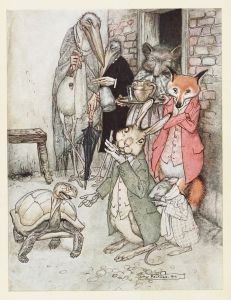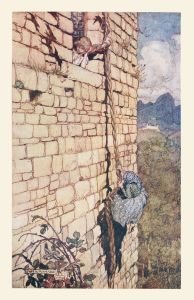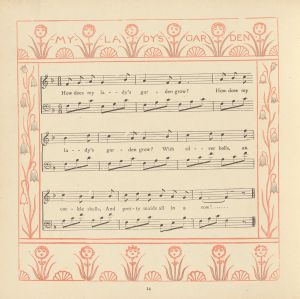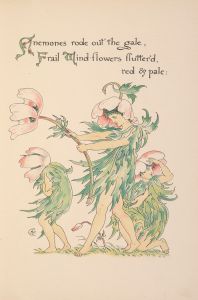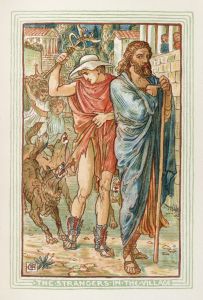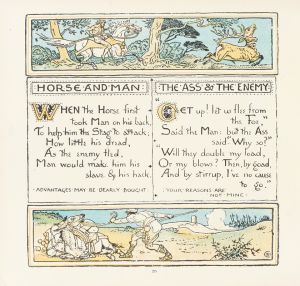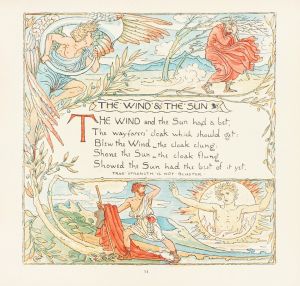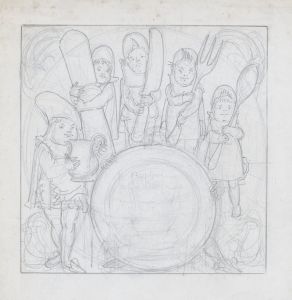
The Lion in love
A hand-painted replica of Walter Crane’s masterpiece The Lion in love, meticulously crafted by professional artists to capture the true essence of the original. Each piece is created with museum-quality canvas and rare mineral pigments, carefully painted by experienced artists with delicate brushstrokes and rich, layered colors to perfectly recreate the texture of the original artwork. Unlike machine-printed reproductions, this hand-painted version brings the painting to life, infused with the artist’s emotions and skill in every stroke. Whether for personal collection or home decoration, it instantly elevates the artistic atmosphere of any space.
"The Lion in Love" is a painting by Walter Crane, an influential English artist and illustrator associated with the Arts and Crafts Movement. Born in Liverpool in 1845, Crane was a prominent figure in the late 19th and early 20th centuries, known for his contributions to children's book illustrations, decorative arts, and socialist political art.
Walter Crane's work often featured elaborate, detailed designs and a strong sense of narrative, reflecting his background in book illustration. "The Lion in Love" is one such example, showcasing Crane's ability to blend storytelling with visual art. The painting is based on one of Aesop's fables, which tells the story of a lion who falls in love with a maiden and, in his desire to win her affection, allows himself to be tamed and ultimately loses his strength and freedom.
Crane's interpretation of the fable is both visually striking and rich in symbolism. The painting typically depicts the lion in a subdued and gentle manner, contrasting with its natural ferocity, to emphasize the transformative power of love and the potential consequences of losing one's inherent nature. The maiden is often portrayed with grace and beauty, highlighting the allure that leads the lion to his fate.
Crane's style in "The Lion in Love" is characterized by his use of vibrant colors, intricate patterns, and a harmonious composition. His attention to detail and decorative elements are evident in the careful rendering of the lion's mane, the maiden's attire, and the surrounding environment. This meticulous approach is a hallmark of Crane's work, reflecting his training and influence from the Pre-Raphaelite Brotherhood and his admiration for the medieval and Renaissance art traditions.
Throughout his career, Walter Crane was deeply involved in the Arts and Crafts Movement, which sought to revive traditional craftsmanship and oppose the industrialization of art. His works, including "The Lion in Love," often carried a moral or educational message, aligning with the movement's ideals of beauty, utility, and social responsibility.
Crane's legacy extends beyond his paintings and illustrations; he was also an advocate for social reform and a member of the Socialist League. His art often conveyed his political beliefs, promoting themes of equality, justice, and the dignity of labor. "The Lion in Love," while primarily a work of art, can also be seen as a reflection of Crane's broader worldview, emphasizing the importance of staying true to one's nature and the potential pitfalls of succumbing to external influences.
In summary, "The Lion in Love" by Walter Crane is a notable example of the artist's ability to merge narrative and visual art, drawing from classical literature to create a piece that is both aesthetically pleasing and thought-provoking. Crane's dedication to the principles of the Arts and Crafts Movement and his commitment to social ideals are evident in this work, making it a significant part of his artistic legacy.





